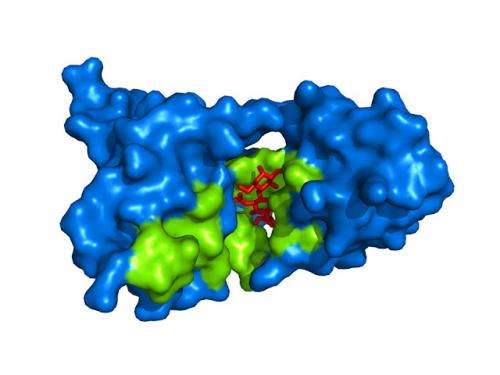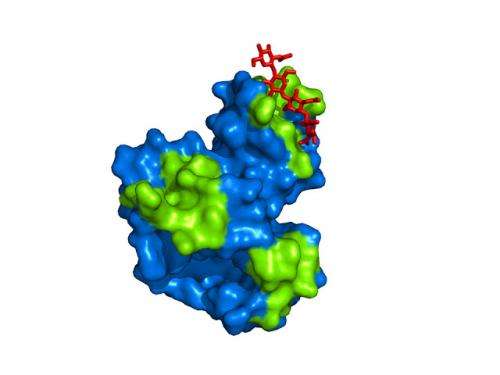Fungus covers fragments of its own cell wall to avoid plant defences

Many fungi can make themselves invisible to the immune system of plants. Scientists from Wageningen University have discovered that the tomato fungus Cladosporium manages this by enclosing chunks of chitin originating from its own cell wall in a protein it specifically produces for this purpose. This prevents the tomato plant from sensing that it is being attacked by the fungus, which has free rein to infect the plant.
Back in 2010, scientists at Wageningen University, part of Wageningen UR, learned that the fungus Cladosporium produces a compound– the so-called Ecp6 protein – which makes it invisible to the immune system of plants. The immune systems of plants and animals use special compounds to destroy invading micro-organisms such as fungi. For instance, the immune system uses chitinases, enzymes that can dissolve the cell walls of fungi, to combat fungal infections. This process releases pieces of chitin, that allow plants to sense the presence of an intruder, and to reinforce the immune response. The fungal Ecp6 protein binds to these chitin pieces. "The protein from the fungus seeks out these pieces of chitin and adheres to them," Professor Bart Thomma explains. "This hides the chitin particles from the tomato plant the same way that a stealth aircraft is invisible to radar. The immune system of the tomato plant therefore no longer receives the signal to ramp up its activity, allowing the fungus to infect the plant without being noticed."
Andrea Sánchez-Vallet, a scientist in Bart Thomma's team, worked together with crystallographers at the University of Lübeck, Germany, to find out how exactly this process works. They already knew that plants can detect pathogens through immune receptors. Certain domains within these receptors, the so-called LysM domains, are able to bind to chunks of chitin from fungi, generating the signal that an intruder came in.

The Ecp6 protein of the fungus was found to also have such LysM domains. Moreover, the immune receptors of the plant and the Ecp6 protein of the fungus actually contain the same number of LysM domains. The two proteins are competitors in the 'capturing' of chitin particles. Given the equal number of binding sites, it seemed quite unlikely that the protein from the fungus would always win over the immune receptors of the plant in the race to bind to the released chitin particles. So how do they do it?
"We discovered that the 3D structure of the Ecp6 protein allows two LysM domains from the fungal protein to work together to bind chitin on two sides," Thomma says. "The fungal protein literally latches onto the pieces of chitin in a sandwich construction. This way the bond is stronger and faster, and the plant can simply no longer reach the chitin particles, as they are quickly tucked away deep in the Ecp6 protein. Furthermore, the chitin was found to be bound so strongly to the Ecp6 protein that the plant gets no chance to liberate it, completely preventing the plant from perceiving it."
The scientists will publish their discovery in the scientific journal e-Life; the new open access journal for outstanding research in life sciences and biomedicine, founded by the Howard Hughes Medical Institute, the Max Planck Society, en the Wellcome Trust. The study was partly funded by a Young Visiting Scientist Stipend awarded by the Netherlands Genomics Initiative (NGI).
More information: elife.elifesciences.org/content/2/e00790
Provided by Wageningen University

















